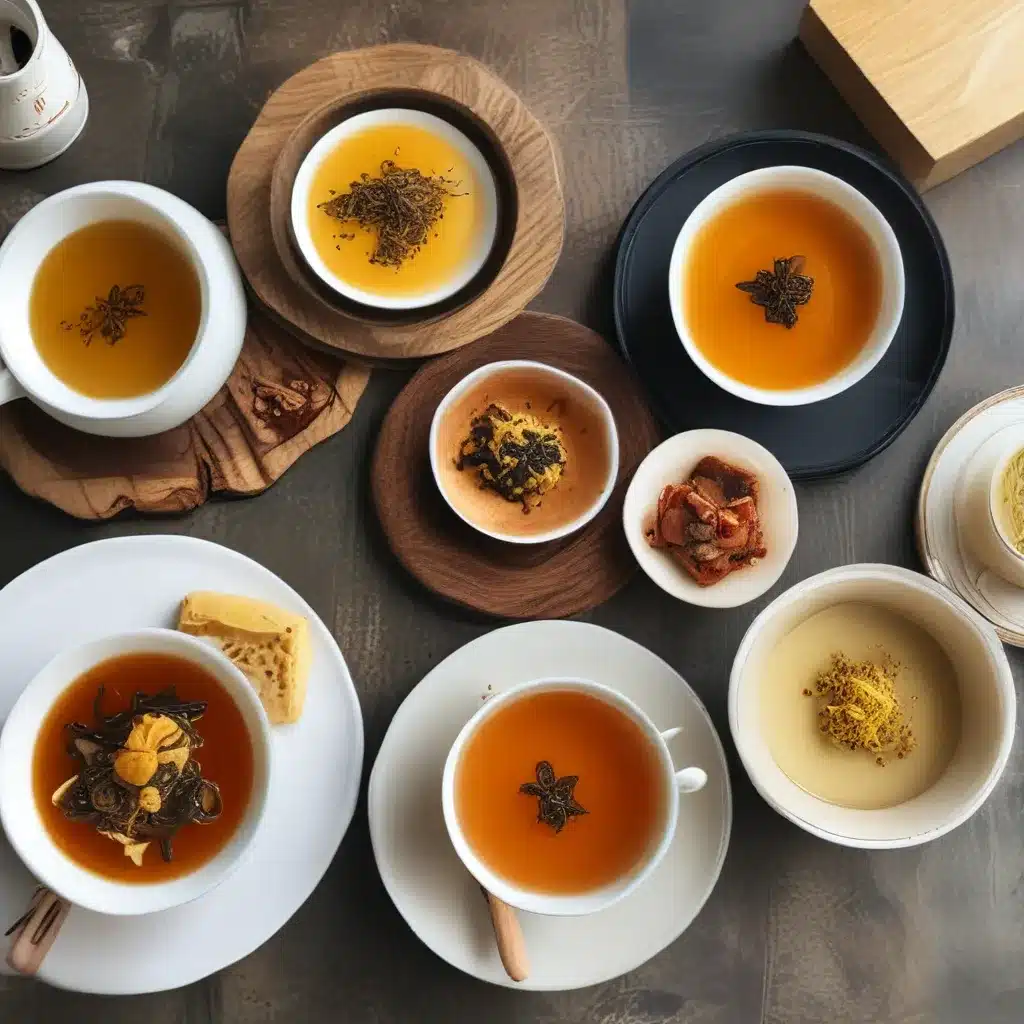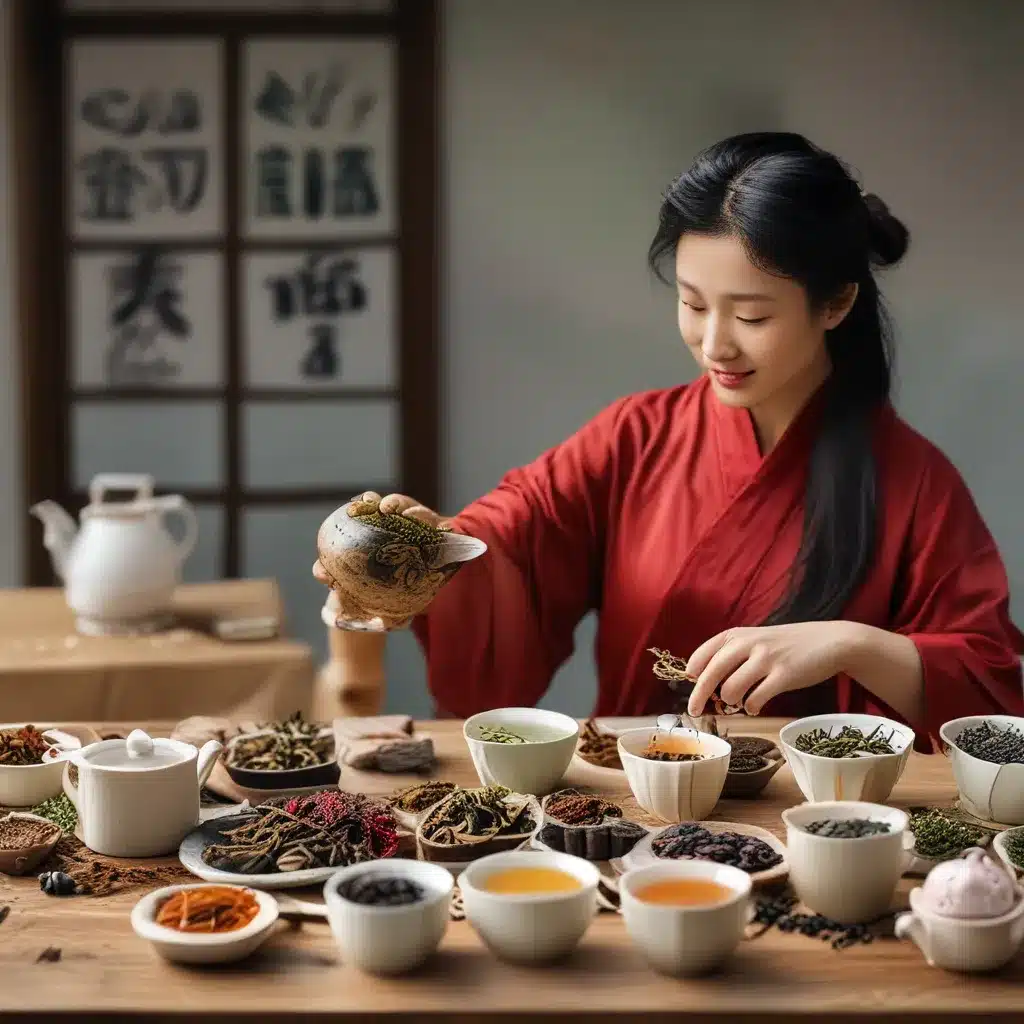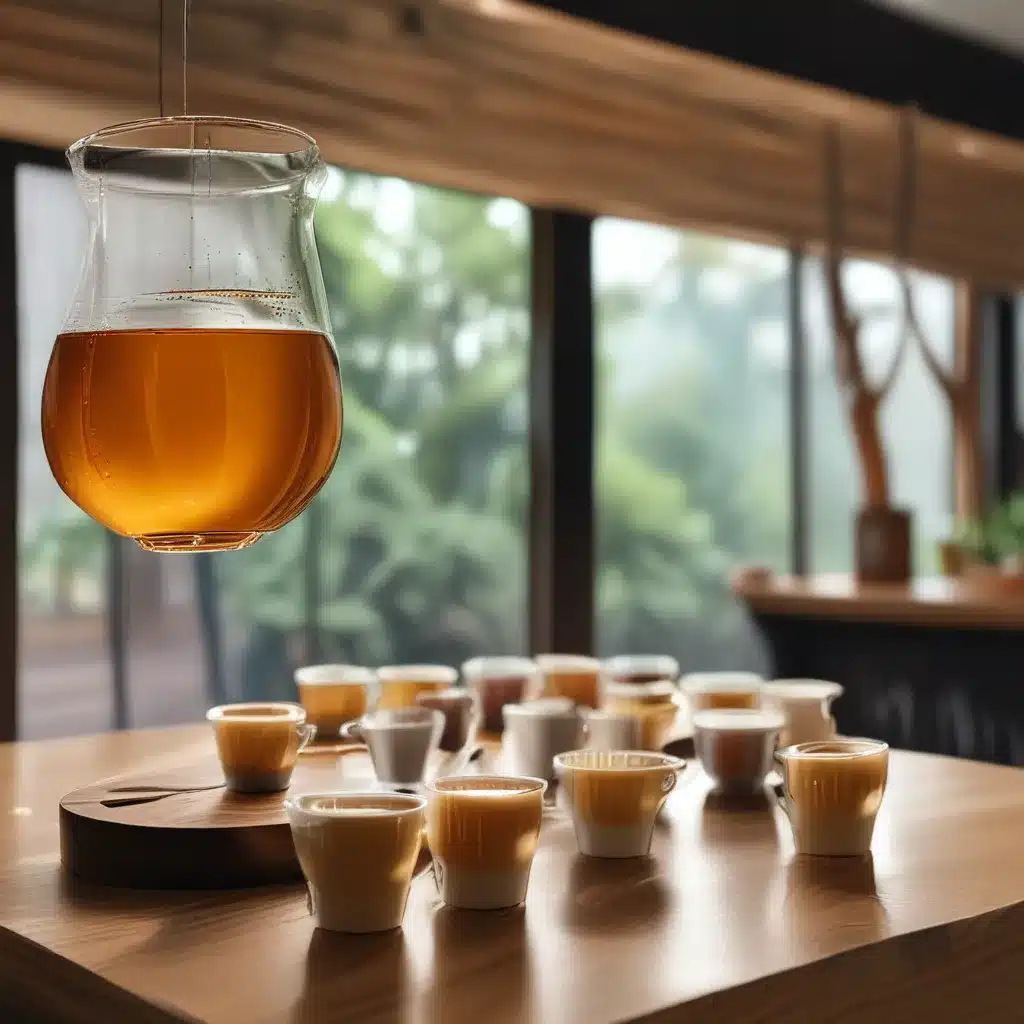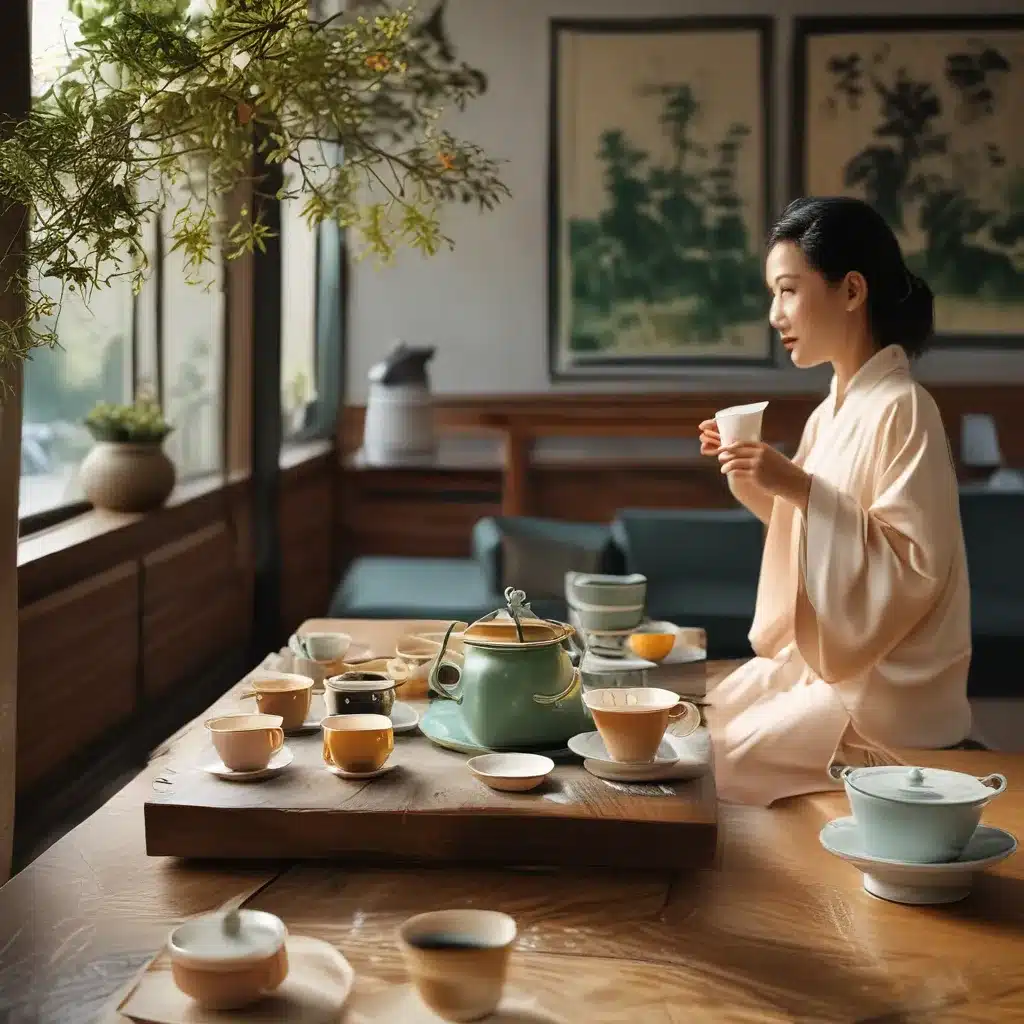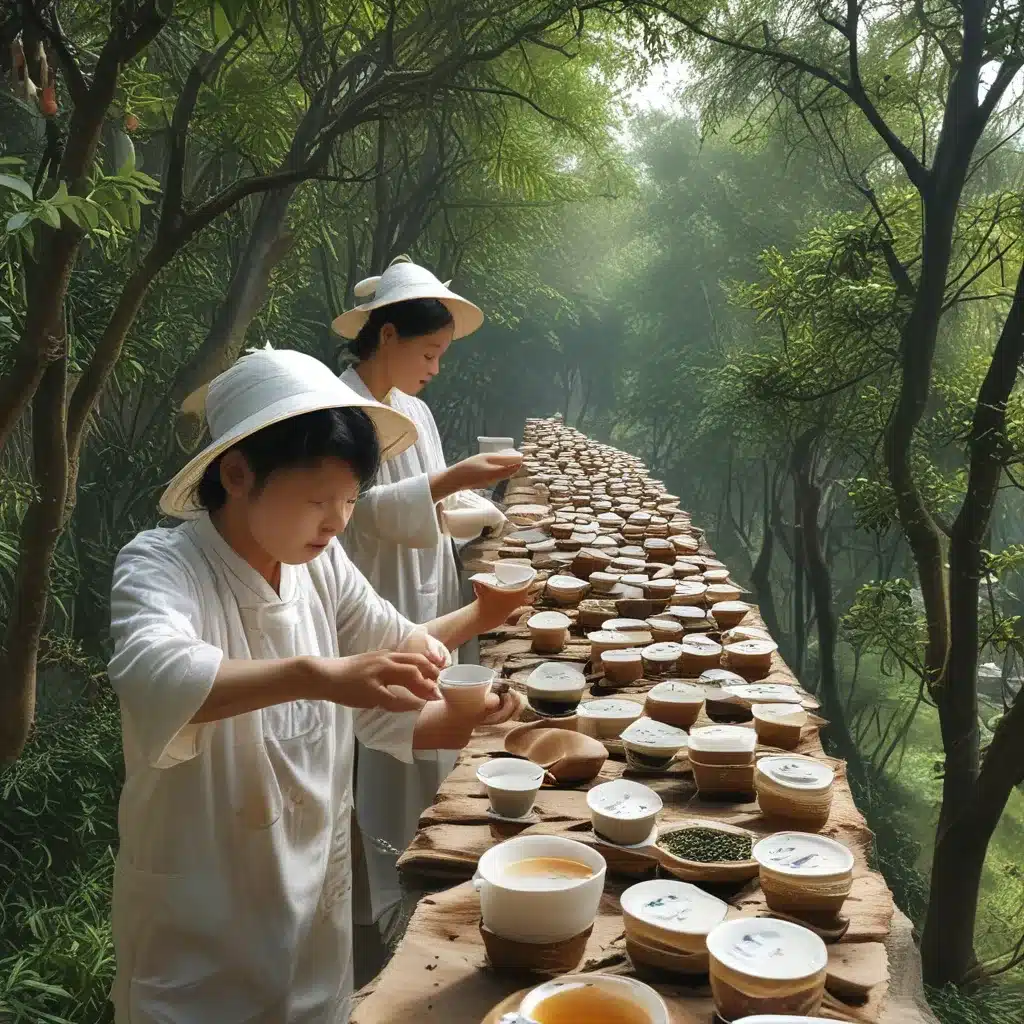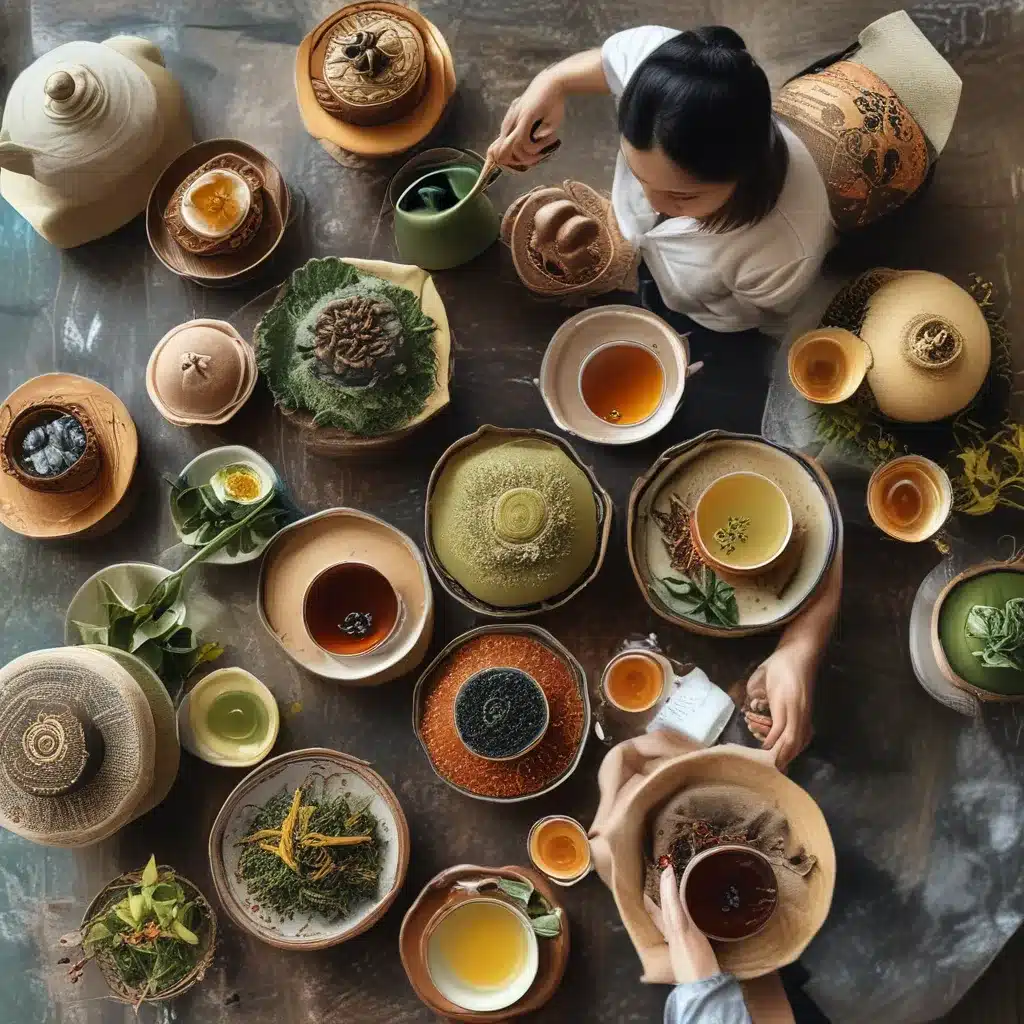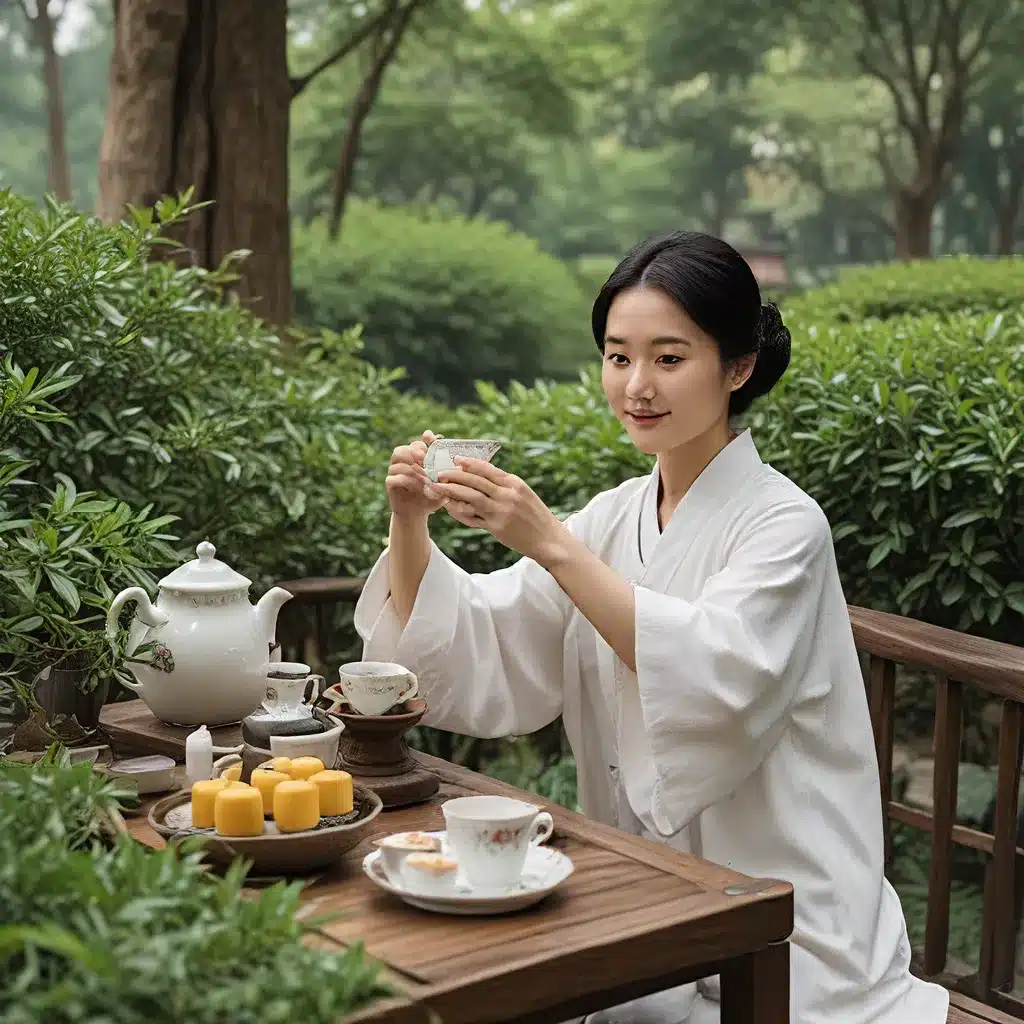
Finding Zen in a Cup of Tea
As I step into the dimly lit teahouse, the air is thick with the fragrant aroma of freshly brewed oolong. The gentle clinking of porcelain cups and the soothing melody of traditional Chinese music create a tranquil ambiance that instantly puts me at ease. I take a seat at a small wooden table, my eyes drawn to the intricate Yixing teapot that sits before me, its deep purple hue a testament to the centuries-old mastery of Chinese tea culture.
The server approaches, her movements graceful and deliberate. With a practiced hand, she pours the steaming liquid into my delicate teacup, releasing a cloud of fragrant steam that caresses my face. I inhale deeply, savoring the earthy, complex notes that dance on my palate. As I take my first sip, I feel a sense of calm wash over me, the stresses of the day melting away.
Welcome to the world of Chinese tea culture, a realm where the humble leaf transforms into an elixir of serenity, and the act of drinking tea becomes a meditation on the harmony of man and nature. In this bustling metropolis of Shanghai, where the pace of life can often feel relentless, the tea traditions of this city offer a respite, a chance to slow down and reconnect with the simple pleasures that nourish the soul.
A Journey Through Time
The history of tea in China is as rich and layered as the brew itself, stretching back thousands of years. According to legend, the origins of tea can be traced to the mythical emperor Shennong, who is said to have discovered the wonders of the tea leaf while boiling water in the 28th century BCE. As the story goes, Shennong was a skilled herbalist who would taste various plants to determine their medicinal properties. One day, as he was boiling water, a few leaves from a nearby tree fell into the pot, infusing the water with a delightful aroma and flavor. Intrigued, Shennong took a sip and immediately felt a surge of energy and clarity, thus discovering the rejuvenating powers of tea.
From these humble beginnings, tea would go on to become an integral part of Chinese culture, weaving its way into the fabric of daily life, religious practices, and even political and economic affairs. Throughout the dynasties, tea cultivation and preparation evolved, with each era leaving its mark on the art of tea. During the Tang Dynasty (618-907 CE), tea drinking became a refined social activity, with scholars and monks gathering to discuss philosophy and the arts while sipping fragrant brews. It was also during this time that the first comprehensive treatise on tea, Lu Yu’s “The Classic of Tea,” was written, solidifying tea’s status as a cultural touchstone.
As the centuries passed, the tea traditions of China continued to flourish, with each region developing its own unique styles and techniques. From the delicate, steamed green teas of Zhejiang to the bold, oxidized oolongs of Fujian, the diversity of Chinese tea is a testament to the country’s rich cultural heritage. And in the bustling metropolis of Shanghai, the tea culture has adapted and evolved, seamlessly blending traditional practices with modern sensibilities.
Discovering the Flavors of Shanghai
Today, the tea landscape of Shanghai is a vibrant tapestry, where ancient customs and contemporary trends intertwine to create an immersive sensory experience. As I wander the streets of this dynamic city, I’m struck by the sheer number of teahouses, each one a unique haven that beckons me to step inside and explore.
One of my first stops is a charming little establishment nestled in the heart of the Old City, just a stone’s throw away from the iconic Yu Garden. The owner, an affable elderly gentleman, greets me with a warm smile and ushers me to a cozy table in the corner. “Welcome to my humble tea house,” he says, his voice rich with the cadence of his Shanghainese dialect. “Let me introduce you to the wonders of our local tea traditions.”
With practiced movements, he begins to prepare a fragrant oolong, the leaves unfurling gracefully in the steaming water. As he pours the brew into my delicate porcelain cup, he explains the history and significance of this particular tea. “This is a Dancong oolong, cultivated in the misty mountains of Guangdong,” he says. “The unique terroir and careful processing give it a rich, floral aroma and a lingering, almost honey-like sweetness.”
I take a sip, and the flavors unfold on my tongue like a gentle melody. The tea is complex and multifaceted, with notes of orchid, toasted nuts, and a hint of citrus. As I savor each sip, I can’t help but marvel at the skill and dedication that has gone into crafting this elixir.
The Art of Gongfu Cha
But the tea experience in Shanghai extends far beyond simply sipping and savoring. In the bustling Xuhui district, I discover a modern tea house that has elevated the art of tea preparation to new heights. This is the realm of gongfu cha, the refined Chinese tea ceremony that has captured the imagination of tea enthusiasts worldwide.
As I step through the door, I’m immediately struck by the serene atmosphere. The space is minimalist and elegant, with clean lines and natural materials that create a sense of tranquility. In the center of the room, a team of tea masters move with a mesmerizing grace, their hands flowing through the intricate steps of the ceremony like a carefully choreographed dance.
I take a seat at the counter, eager to witness the ritual unfold. The tea master, a young woman with a keen eye and a gentle demeanor, greets me with a warm smile. “Welcome to our tea house,” she says. “Today, we’ll be exploring the art of gongfu cha, a centuries-old tradition that elevates the humble tea leaf to the realm of high art.”
As she begins to prepare the tea, I watch in rapt attention. With deft movements, she rinses the delicate Yixing teapot, swirling the hot water to warm the vessel. Next, she carefully measures out the tea leaves, their deep green hues a testament to their freshness and quality. The water, heated to the perfect temperature, is poured over the leaves, releasing a captivating aroma that fills the air.
But the true magic happens in the way the tea master handles the teapot, pouring the brew with a fluid grace that seems almost otherworldly. She tilts the vessel, allowing the tea to cascade into the waiting cups, each pour perfectly calibrated to ensure an even distribution of flavor. I can’t help but be mesmerized by the precision and elegance of her movements, as if she is conducting a symphony of taste and aroma.
As I take my first sip, I’m struck by the depth and complexity of the tea. The flavors unfold on my tongue, revealing layer upon layer of subtle nuances – a hint of stone fruit, a whisper of toasted nuts, a lingering sweetness that lingers long after the last drop has been savored. It’s an experience that transcends mere consumption, a true meditation on the harmony of man and nature.
The Spirit of Tea
But the tea traditions of Shanghai are not just about the perfect brew – they are about the cultivation of a deeper sense of well-being and connection. Throughout Chinese history, tea has been inextricably linked to the spiritual and philosophical traditions that have shaped the country’s cultural identity. From the Zen-like focus of the gongfu cha ceremony to the Taoist emphasis on harmony and balance, tea has long been seen as a conduit for self-reflection and inner peace.
As I delve deeper into the tea culture of Shanghai, I begin to understand the profound significance that this humble leaf holds for the people of this city. In the tranquil teahouses that dot the cityscape, I witness the unwinding of daily stresses, the shedding of social barriers, and the coming together of strangers in a shared appreciation for the simple pleasures of life.
Whether it’s the elderly gentleman who regales me with stories of his family’s tea legacy or the young tea master who speaks of the meditative qualities of the gongfu cha ritual, I’m struck by the deep reverence and respect that Shanghainese have for their tea traditions. It’s a reverence that transcends mere consumption, a recognition of the power of tea to nourish the body, mind, and spirit.
A Timeless Tradition, Reimagined
As I prepare to leave the city, I can’t help but feel a deeper appreciation for the tea culture that has so profoundly shaped the identity of Shanghai. In a world that often moves at a breakneck pace, the tea traditions of this city offer a respite, a chance to slow down and reconnect with the essential elements of life.
Whether it’s the serene ambiance of a cozy teahouse, the elegant ritual of gongfu cha, or the profound spiritual resonance that tea holds for the people of Shanghai, this ancient art form has the power to transport us to a realm of pure tranquility and joy. And as I sip my final cup of oolong, I can’t help but feel a sense of gratitude for the generations of tea masters, artisans, and enthusiasts who have kept this timeless tradition alive, ensuring that the spirit of tea will continue to be a source of solace and inspiration for all who seek it.

